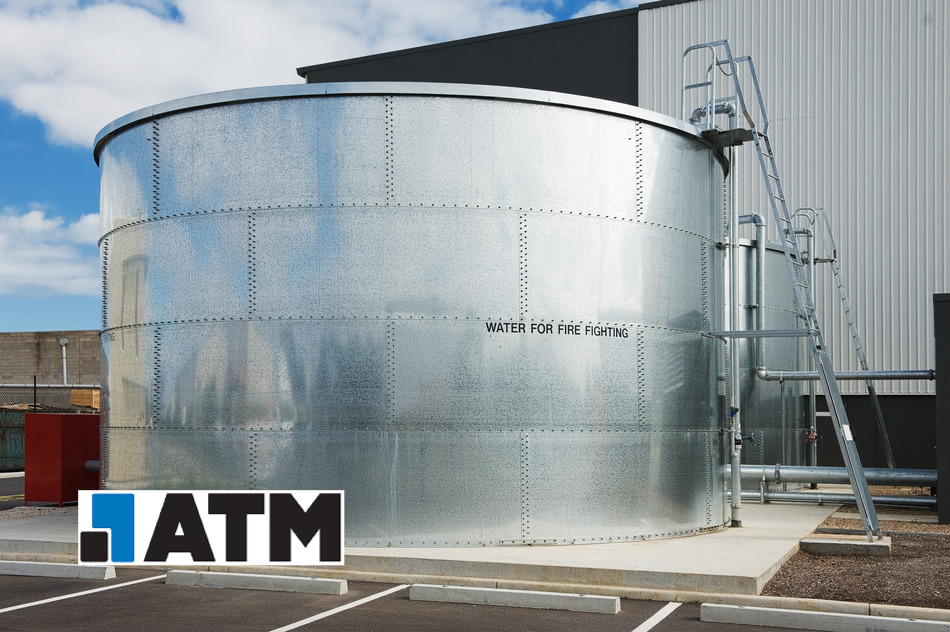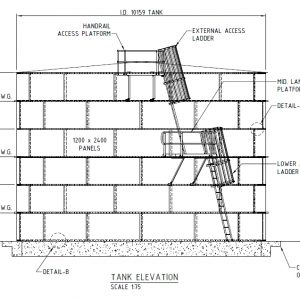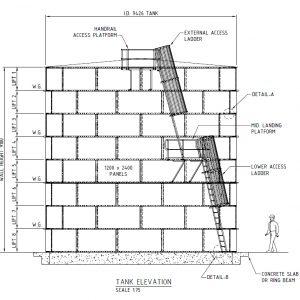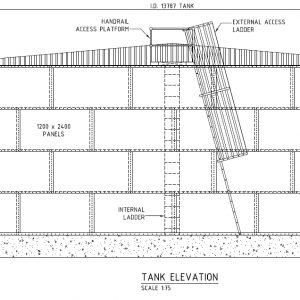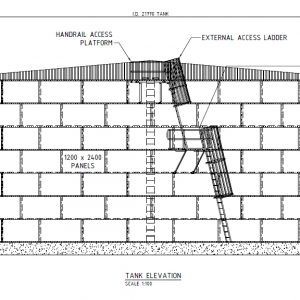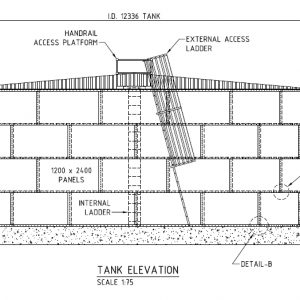There are, two key reasons for the installation of automatic fire sprinkler systems: life safety and property protection. In the two cases, their efficiency in putting out and controlling fires has protected the environment and lives for more than 120 years by utilising fire tanks.
At Australian Construction Services, we install property protection systems when the insurer of the building occupier requests us to protect the business by making sure that the building and its contents are shielded from fire.
The primary aim of some systems is to comply with fire or building regulations to protect the public, fire-fighters, and employees from fire risks. This kind of system is called ‘enhanced availability’ sprinkler systems but is often called ‘life safety’ sprinkler systems. They include a variety of extra features, which decrease the likelihood of the system failing to work because planned maintenance and service is going on.
In these two cases, the water supply is a crucial aspect of the system. It can be direct supply from the nearby water service main using a booster pump or not. Alternatively, you can store water in a tank with a pump to direct the water to the sprinkler system.
A popular arrangement is one water storage tank with a couple of fire tanks, and both can meet a sprinkler system’s needs. For more reliability, at Australian Construction, we divide the water storage tank into two half-capacity tanks. It ensures that a water supply is always accessible to the sprinkler system, even during the servicing or maintenance of one tank.
Installing Fire Tanks
Installing water tanks near the house and shed in rural locations enables rural fire-fighters to fill up their tankers again fast and return to the task of extinguishing fires quickly. The fires are dangerous to individuals and property particularly during periods of drought and heat.
Fire Tanks Fittings
At Australian Construction we appreciate that you should have access to water for your fire trucks and team. The solution is to have our expert staff install the Stortz specialist fittings inside the tank. With these fittings fire trucks’ filling hoses can link straight to the tank. It facilitates the tank to be filled quickly. We also fit a vortex inhibitor to the tanks, to assist in maximising the water flow from the tank.
Fire Tanks Access
After we install a water tank, we need to make sure that accessing the tanks is simple for you. The area near the tanks should have the capability of accommodating two trucks or appliances with suction hose connections.
It would be best for you to keep the area near the tank clear of any foliage or vegetation because it could ignite and prevent access to the tank in case of a fire. Australian Construction professionals carry out regular clearance and maintenance of the sections near the tanks. This clearance and access hasten up the refilling procedure, making the site more secure for the fire-fighters.
The right quantity of water you should store.
If your building is in an area where the risk of bushfire is higher, you should consider linking the tank to dedicated fire hoses or installing a sprinkler system for protecting your property. You should have at least 10,000 litres of water if you install a tank. Any tank with less than 10,000 litres of water will not be able to fill a water tank. It cannot be used near the home or other structures.
At Australian Construction, we use fittings and hoses that can withstand being hauled through an ongoing fire. If the tank we are installing is used for fire fighting water and also to use around the home, we advise you to choose a bigger tank. Our professionals arrange the tank fittings to make sure that water will be available at all times for fire fighting.
Galvanised water tanks are best during wildfires.
Fire-water storage tanks should have the ability to withstand different kinds of heat and flame conditions during a wildfire. Our poly tanks are mainly made of polyethylene. This material is great for recycling because it’s a ductile thermoplastic that you can melt to be re-created again and again.
Radiant heat exposure triggers stress, and with the combination of the pressure of holding water, the poly tanks become unstable, sag, and split. Polyethylene’s transition temperature (the point where it begin to soften) is slightly more than boiling water’s temperature. When poly tanks are exposed to fire, their base begins to blister.
Our galvanised tanks are available in two kinds: rolled galvanised tanks with small volumes of around 5000 gallons and bolted liner tanks that hold 5,000 gallons and more. Galvanised steel tank roof and shell shields the water and liner from flames that are blown on the high winds. When subjected to radiant heat the water in the fire tank works as a giant sink preventing the liner from being damaged.
Conclusion
Australian Construction is proud to have been supporting the fire fighting service for many years. We provide a variety of water tanks to fight fires, and our range includes tanks especially manufactured for commercial applications.


